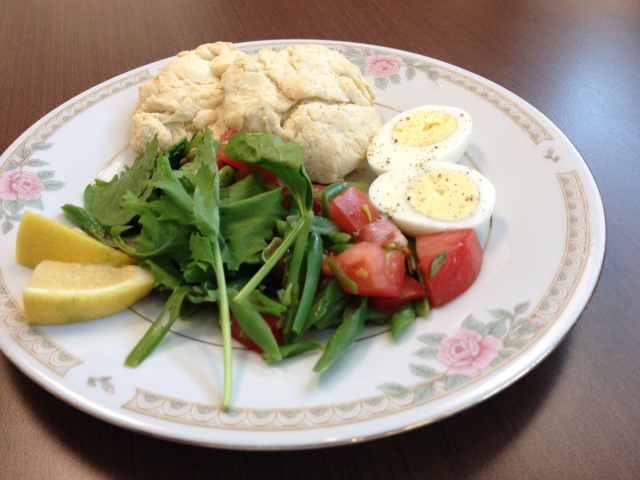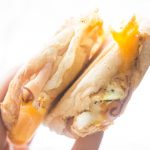March is nutrition month and since nutrition and healthy eating are core components of HANS KAI, our dieticians have provided some tips for healthy eating
THE POTENTIAL TO FUEL:
Stay energized by planning nutritious snacks into your day. Nutritious snacks, in the right portion sizes, can be part of a healthy eating plan. Almost half of all Canadians say that eating a balanced diet is challenging for them because they are so busy. They often skip meals, and close to 30 per cent of Canadians say they snack to stay fueled in a busy day.
FIVE TIPS FOR HEALTHY SNACKS
Snacks are foods or drinks that are consumed between meals. When you’re on-the-run during a busy day, think of snacks as mini-meals that offer some nutritional value and an energy boost. These are different than treats, such as cookies, chocolate and chips, which are not nourishing. Here are five helpful snacking tips:
- Plan ahead. Keep a variety of healthy, ready-to-eat snacks on hand for when you get hungry. Being prepared helps you avoid less-healthy treats.
- Be aware of portion sizes. Instead of snacking from a large bag or box, take a portion and put it on a plate or bowl.
- Listen to your hunger cues. Ask yourself: am I truly hungry, or am I eating because I am bored, tired or stressed?
- Skip distracted snacking! Avoid munching while looking at a screen, driving or working. You may eat more than you need if you’re distracted from your feeling of fullness.5.Snack on vegetables! About half of all Canadians don’t eat enough vegetables or fruit. Snacking on them between meals is a great way to add more.
HEALTHY SNACK IDEAS
Look for snacks with some protein and fiber. Here are 11 great ideas!
- Carrots and peppers with hummus
- Almond butter on banana slices
- Greek yogurt topped with berries
- Whole grain toast with peanut butter
- Cheddar cheese and apple slices
- Small handful of trail mix made with nuts, seeds and raisins*
- Roasted chickpeas and popcorn mix*
- Whole grain cereal with milk
- Sliced vegetables with yogurt dip
- Tuna on crackers
- Whole grain toast with avocado and sesame seeds
THE POTENTIALTO DISCOVER:
Foster healthy eating habits in children by teaching them to shop and cook. Starting from a young age, inspiring children to shop, cook and prepare food can set them up for a lifetime of healthy eating. Yet, a recent survey found that 38 per cent of parents rarely or never let their child prepare a meal or snack.
FIVE TIPS FOR COOKING WITH KIDS
- Pick a recipe and shop together: Children need to be part of the plan from the beginning, and it helps if they choose and prepare something that they love to eat.
- Incorporate learning: Build on lessons they learn in school, such as math, social studies, media literacy, spelling, science and reading. Younger children can practice fine motor skills.
- Keep it fun! Imaginative play helps children get deeply involved. Make a theme night or turn your kitchen into a restaurant.
- Be a role model: If you’re excited, they will be too. Try a new food, describe the flavour and be adventurous to inspire your kids to do the same.
- Be cool about the mess: Spills and accidental messes happen, and it’s important to remain calm
WHAT CAN MY CHILD DO?
Here’s a guideline of kitchen skills based on age:
- 2-3 year olds can wash vegetables and fruit or tear lettuce and salad greens
- 3-4 year olds can mash potatoes and bananas or mix together batters
- 4-6 year olds can measure dry and liquid ingredients or set the table
- 6-8 year olds can toss salad ingredients together or make a simple breakfast
- 8-12 year olds can make their own school lunch or help to plan meals
- Teens can follow more complicated recipes or assemble and mix most ingredients. They can also be in charge of making one meal per week in addition to making their lunch.
THE POTENTIALTO PREVENT:
Understand how food can help prevent chronic diseases like type 2 diabetes and heart disease. Lifestyle factors, including what we eat, can influence our health. A nutritious diet can help prevent illness and can lower the risk of developing chronic diseases.
BUILD A BALANCED DIET
There are many diets or “eating patterns,” and some are healthier than others. The best eating pattern is one that you enjoy and can stick with. The eating patterns that have been the most researched for their health benefits include the Mediterranean, DASH and MIND diets. The foods that are recommended on these patterns can help prevent type 2 diabetes, heart disease, stroke, dementia and some types of cancer.
Here are some foods that are common to all of them:
- Vegetables and fruit
- Whole grains
- Legumes like beans and lentils
- Nuts and seeds
- Milk, cheese and yogurt
- Fish, seafood and poultry
- Healthy oils like canola and olive
These nourishing foods are the basic ingredients that form the diet for disease prevention. You may also notice what’s missing from these eating patterns. They don’t contain highly processed products, like cake, chips, cookies and sugary drinks that are high in added sugar, salt and Trans fat. Almost 80 per cent of premature stroke and heart disease can be prevented through healthy lifestyle behaviors. These include eating healthy, being active and living smoke-free. The journey toward wellbeing begins with how we eat and dietitians have the knowledge, compassion and flexibility to help you achieve.
THE POTENTIAL TO BRING US TOGETHER:
Enjoy the benefits of bringing families and friends together with food. Canadians are busy! In a recent 30 per cent of Canadians said it’s challenging to find time to eat meals with friends and family. It’s an enriching experience for people of all ages to share meals.

WHY SHARE MEALS WITH OTHERS?
The biggest barriers to eating together are busy schedules like work and evening activities. It’s worth the effort because everyone benefits when you eat in the company of others!
- Children who eat with their family have more nutritious diets, better academic performance, a lower risk for being overweight and less risk of eating disorders. Plus, children tend to have increased intake of vegetables and fruit, and a decreased intake of sugar-sweetened beverages.
- Teens who share family meals get better grades, and are less likely to smoke, use drugs or alcohol, or to participate in serious fights.
- Adults who eat with friends and family tend to eat more vegetables and fruits, drink less pop, eat fewer meals at fast food restaurants, and have lower body mass indexes.
- Older adults who eat as part of a group have better diets, improved nutrient intake and lower rates of malnutrition.
- People who come together in communities can eat together at community kitchens, where they learn to cook, share meals, try new foods, have fun and learn about nutrition.
Check out 10 recipes for Nutrition Month at:
https://www.dietitians.ca/Downloads/Public/07—Nutrition-Month-2019/Recipes-2019-Nutrition-Month/10-Feature-Recipes-English.aspx
















